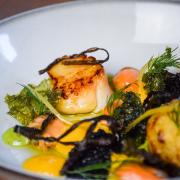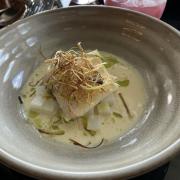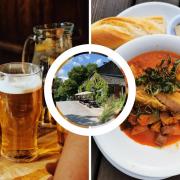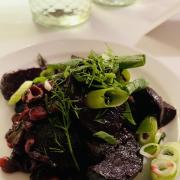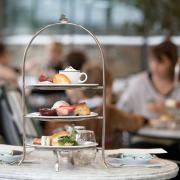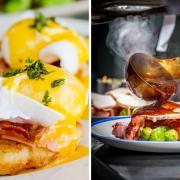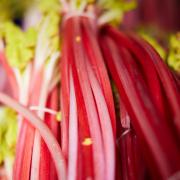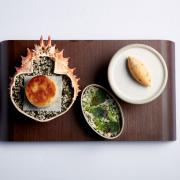Meet the man behind one of Yorkshire’s most admired smokehouses with tips on smoking your own food. Our food and drink consultant Annie Stirk reports.

Justin Staal believes we should all take up smoking, but only in terms of food preparation.
‘For me, smoking is just another form of cooking and it’s something everyone can do at home,’ says Justin, from-award winning Staal Smokehouse in Long Riston, East Yorkshire. ‘And what better opportunity to experiment than on November 5th?’
Of course, while a sophisticated bespoke brick kiln might produce the best hot smoked meat and fish, a barbecue will also work. ‘A barbecue, old bread tin or biscuit tin is fine,’ says Justin. ‘Or even a wok on the hob, but the fun starts when you experiment with how long you smoke. Do you want a “slap you around the face” kind of smoke or a light and lovely flavour? It all depends on your personal taste and your patience; it can take a bit of time to impart a good flavour, so keep your guests amused with the light show and the bonfire while you experiment!’
For Justin, smoking is second nature. When he and his wife Georgina began experimenting with hot smoking fish at his cottage in the East Riding in 2008, it was very much trial and error. ‘I had a small kiln outside the backdoor and experimented with a few foods and woods at first,’ says Justin. ‘But many of them ended up in the bin. There’s this insatiable urge to intensely smoke the food, so you close up all the vents and choke the thing to death. In fact, you want to ‘kiss’ the meat or fish with the smoke, not turn it into an ashtray. You need to keep the vents open and draw the smoke over the food instead.’
Fortunately, Justin has had a good grounding for his career and, after working as a commis chef on board ships in the Mediterranean, he went on to organise fly-fishing holidays along the Icelandic rivers where he watched them smoke guillemot and cure ptarmigan in its farming heartland. In Alaska, he learned first-hand how to hot-smoke king salmon and sifted for more gems in the far-flung fishing lodges of Russia.
‘I’d always loved food and the more I cooked the more I fell in love with it,’ says Justin. ‘When we moved back to Yorkshire, my father-in-law handed me a Mark Hix article about smoking that he had seen in one of the Sunday papers and said “why don’t you look into it”; suddenly it all clicked into place.’
Swapping the fast lane for slow food hasn’t been without its difficulties and, despite the critical acclaim, Justin sometimes feels he knows ‘hardly anything’ about smoking. ‘When I first smoked duck it was a disaster, far too salty and it went straight into the bin. In fact, I would say every product I have done, I haven’t got it right the first time. Of course, I also cold smoke too, where you keep the temperature below 30 degrees so the proteins don’t break down, and this brings its own challenges. Many of the bigger smokehouses offer heavily smoked food but I like mine to be delicate in flavour. I think it tastes better and I learn something new every day about it. But that’s the fun for me, experimenting, developing the recipes and cures.’
Justin’s schedule is battering too: up at 6am most days to get in supplies – salmon from Grimsby fish market, duck and chicken from T Soanes and Sons of Driffield, trout from Brandesburton – and most afternoons are spent curing and washing. ‘My biggest challenge is keeping the product consistent and managing my time. I can still be washing the fish at 10pm at night and then it takes 10 hours to smoke. I’m normally going 100 miles an hour so I have to find ingenious ways to get everything done.’
Smoking takes place in a purpose-built kiln at Staal Smokehouse and once the fish has been massaged with a concoction of sea salt and dark molasses sugar, or the poultry has been brined, the food is then enveloped in a fine smoke from a blend of oak and apple wood sawdust – sometimes under the watchful gaze of Justin’s two boys Archie, aged six and three-year-old Sebastian.
‘The boys eat me out of house and home when it comes to smoked food,’ says Justin. ‘I have a lot of children coming to my farmers’ market stalls and, although they profess to hate fish, they’ll happily chomp down a piece of smoked fish without a problem.’
And Justin’s passion lies in this area: spreading the word about smoked food. ‘People love smoked food but don’t really know how to use it,’ he says. ‘It’s not just about getting a piece of smoked trout and slapping it on a piece of bread, smoked fish and meat are so versatile, whether it’s a smoky Ceasar salad, pate or pasta.’
Staal Smokehouse is certainly a hot topic in Yorkshire, not only among award judges – it has won a Great Taste gold for its smoked salmon, was shortlisted for VisitEngland Awards for Excellence 2014 and won a Remarkable Fayre award in the 2013 Remarkable East Yorkshire Tourism Awards – but among restaurateurs and celebrities too.
Paralympic champion David Weir and pop star turned TV science-guru Prof Brian Cox were among the guests tucking into Staal’s hot smoked trout at Bridlington’s International Business Convention in June, and the Michelin-star restaurant at the Pipe & Glass Inn, South Dalton, The Star at Sancton and the new Crafthouse in Leeds are among the restaurants using Staal’s smoky products in their dishes. ‘I’ve just started smoking goose for Christmas time and that’s gone down really well, and we’ve signed up with online farm shop Farmison to sell that nationwide,’ says Justin. ‘And I’m envisaging how eels might work in my smokehouse.’
Justin is keen to move into smoking more local beef and bacon. ‘My job has really opened my eyes to the number of amazing small producers in the region and if I can add value to their raw products that’s fantastic. There used to be lots of small artisan smokehouses in the Hull area but these have died out and I like the idea that I’m reinstating a little bit of history.’
Justin Staal’s top tips on smoking at home
Meat or fish
• For bonfire night, I feel it has to be something meaty so think beef ribs, leg of lamb, sticky pork ribs or a good steak. Chunky meats lock in the smoky flavour better.
• Slow cook the meat in the oven and leave to rest, then add to the barbecue once cooled (a round barbecue with a grill and big lid is ideal).
• Once the coals are glowing, add the meat and place it away from the wood chips so the smoke flows over the meat; if you put it directly on top, it will taste burnt. Some modern barbecues now have separate smoking boxes especially for this purpose.
• Put the lid down but open the vent a little so the smoke can circulate and check the meat is cooked through (at 75C in the centre) using a thermometer before eating.
Salt or brine
• Brines and salts are great for fish. I like to use an 80 per cent brine mix (so, for example, 5 litres water to 2.6 kilos salt) and then you need to soak the fish for an hour or so, rinse and pat dry – or, even better, hang up in a warm but draughty area (away from flies) to drip-dry thoroughly.
• You can also rub dry salt into fish such as mackerel and wash it off quickly (it’s easy to over salt) and dab it dry with a tea towel.
• The salt draws the moisture from the flesh and gives it that lovely flavour when smoked.
Barbecue or bread bin
• While meat is best on the barbecue, fish can be fun smoked in an old bread bin or biscuit tin kiln with holes drilled into the top and sides. Essentially, you need something with a metal rack so you can lay the fish on top and the smoke can get all around it.
• Add soaked woodchips on top of the hot coals, pop the cooked fish on the rack, and put on the lid.
• Experiment using a large wok with a lid and grill – this is great for duck breast – and smoke the meat with dried tea leaves such as Chai or Lapsang Souchong. Again, there’s no set recipe – it’s up to you how smoky you want it.
Apple wood or oak
• There are all sorts of wood chips on the market these days: hickory, beech, lilac, mulberry, pear, but my favourite is mesquite because they give a richer flavour. They are good for barbecues because they burn hot and fast.
• Fruitwoods, such as cherry, apricot or apple wood are also very nice but impart a milder flavour.
• Always buy woodchips, rather than creating your own – as chainsaw oil can easily get into the wood and contaminate your food – and always make sure it’s untreated.
• Soak the chips for a good couple of hours beforehand so you get a good smoke once they’re on top of the hot coals.
Look for delicious products at Yorkshire’s other craft smokehouses…
Mackenzies Yorkshire Smokehouse
Where: Wood Nook Farm, Hardisty Hill, Blubberhouses, yorkshiresmokehouse.co.uk
How: This family business has spent the last 25 years creating smoked and cured foods at Blubberhouses Moor, using traditional pure oak smoking methods.
What: A growing range of dry cured meats including bacon, ham and venison, fish such as salmon, mackerel and tuna, poultry and cheeses including Parmesan and Wensleydale.
Bleikers
Where: Leeming Bar Business Park, bleikerssmokehouse.co.uk
How: Founded by Swiss chef and restaurateur Jurg Bleiker in 1993 and now run by the second generation of the family.
What: Large range of smoked salmon products including ones with malt whisky, highland peat and applewood, try too their smoked kippers and trout.
Fortune’s Kippers
Where: 22 Henrietta St, Whitby, fortuneskippers.co.uk
How: Run by fifth generation brothers Barry and Derek Brown (with a sixth generation learning the ropes) and trading since 1872, Fortune’s is one of Whitby’s most famous and oldest businesses. The herrings are still gutted by hand, soaked in a brine, cured and then smoked using fragrant oak, beech and softwood to turn them into kippers. Each batch takes three fires and 18 hours to complete.
What: Pure and simple Whitby Kipper which have gained international recognition.




